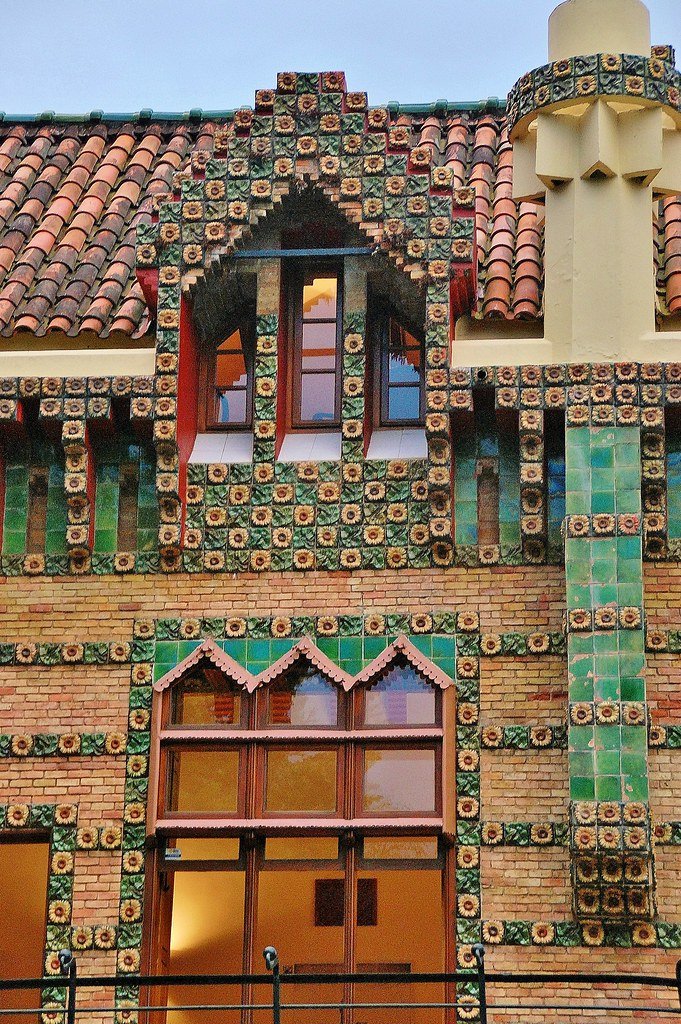#14037. Modernist Facade with Floral Ceramic Ornamentation

Before us stands a striking example of modernist architecture with a palpable influence of Catalan Art Nouveau. The building's facade represents a magnificent example of decorative arts, where traditional elements are reinterpreted in a contemporary manner. Particularly noteworthy is the rich ceramic ornamentation of the facade featuring a repeating floral pattern in green and terracotta hues, which frames the window openings and serves as an accent element against the brick masonry.
The upper part of the building is crowned with a traditional tile roof, creating an interesting contrast with the eclectic decor. The architectural composition is constructed using stepped elements above the second-floor windows, giving the facade a sense of dynamism. The lower tier of the facade features larger glass openings framed by the same decorative ceramics, creating visual coherence throughout the entire composition.
The color palette of the facade presents a harmonious combination of terracotta, green, and beige tones, giving the building both a vibrant and organic appearance. This approach to facade design can be successfully adapted for modern private homes, where playing with ceramic elements, contrasting colors, and textures will allow creating a memorable architectural image without the need to fully replicate a historical style.